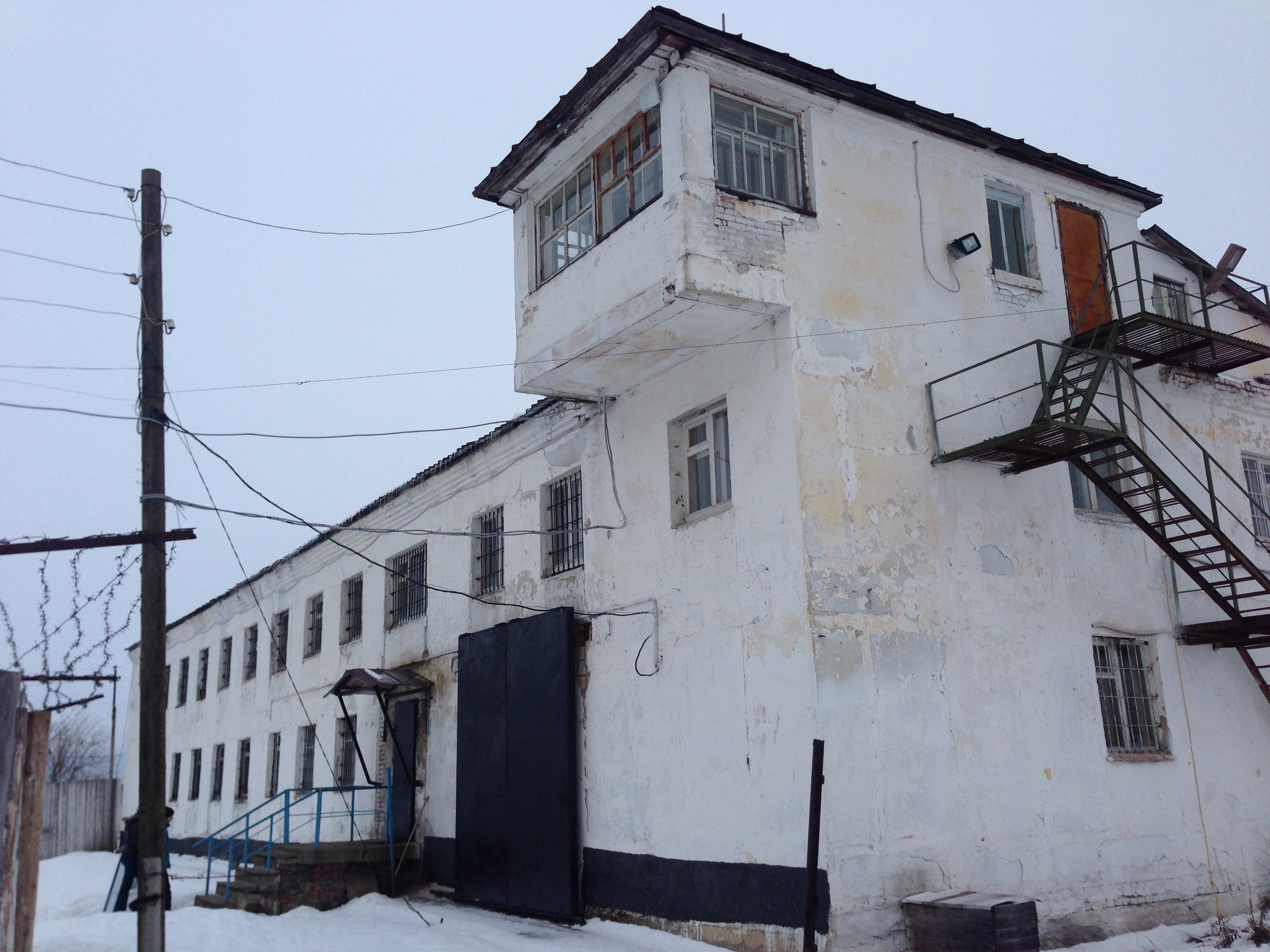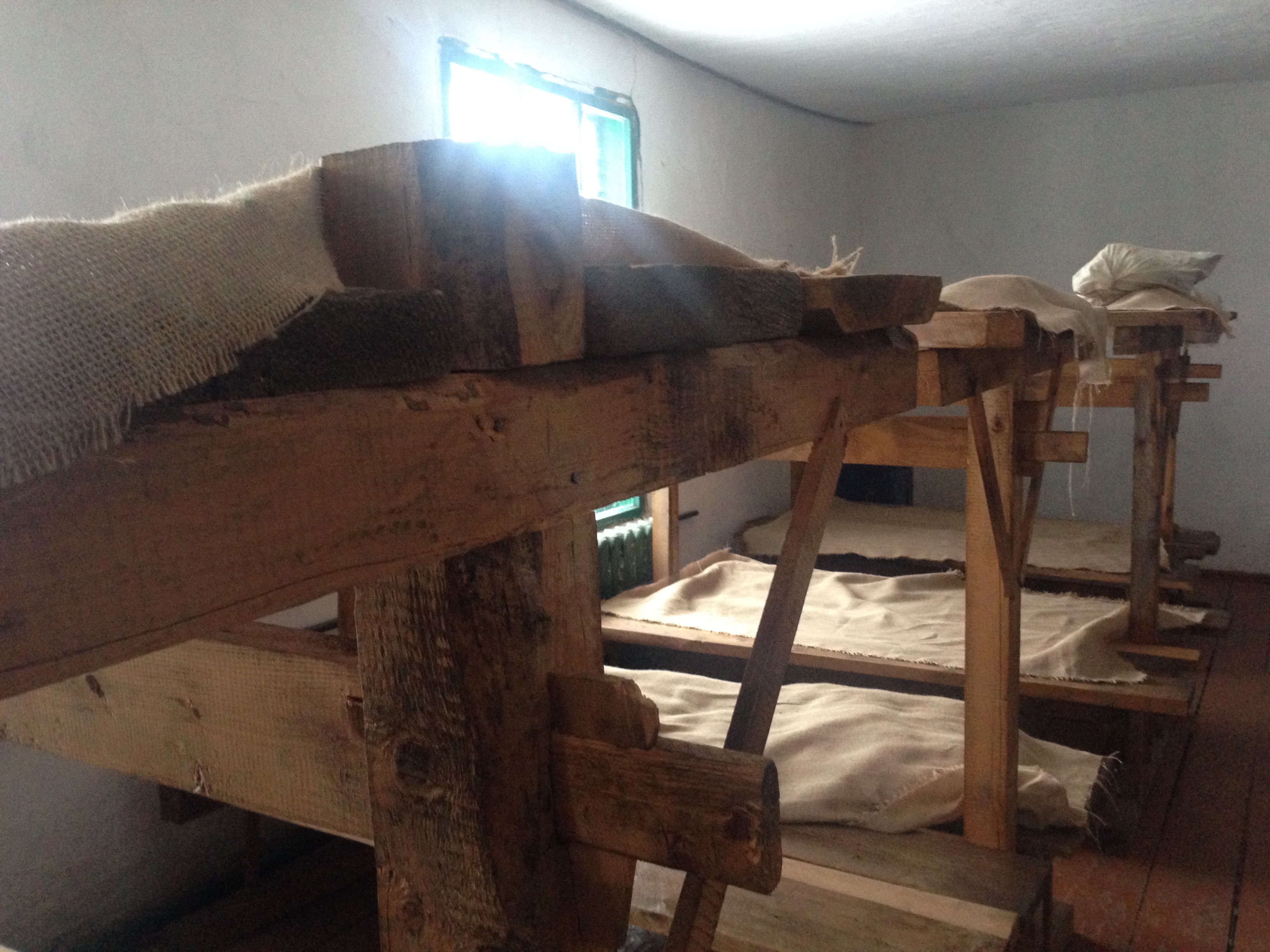It has been one year since my visit to Perm – 36, a Russian Gulag. I noticed in my visitor analytics that some visitors to my site land here searching for information on this forced labor camp. Given the political climate here in the United States — especially this notion of locking up political opponents and harsh treatment of dissenters/protesters/whistleblowers — I decided to publish a more detailed account of my visit from my travel narrative. May the mistakes of the past never be forgotten.
After a good night’s rest, the familiar face of the receptionist brought me a cooked-to-order breakfast of pancakes with a side of condensed milk along with a few cottage cheese dumplings. She also dropped off a city map incase I got lost, all in Russian. I am not sure how she expected me to use it, but I appreciated the gesture.
She was the same person who checked me in the previous evening. It turned out that the hotel staff worked in twenty-four hour shifts.
I quietly reflected that it was Black Friday back home where most retail workers would also be putting in unusually long hours for the occasion. For the staff here, those long hours were the norm.
I thought back to Mr. Molin’s class and his booming voice teasingly threatening to send us to a gulag when we failed to stay on task. Now, he would be able to claim he actually sent a former student to a gulag through his stirring lectures.
Soon after breakfast, the receptionist called to inform me my taxi driver was waiting. As we were leaving the hotel, he immediately corrected the receptionist: “I am not your taxi driver! I am your guide for Perm-36.”
Any fear his accent would be too strong or his English weak dissipated.
Alexander was a lifelong resident of Perm having spent his entire life working in tourism. His success in tourism was evident from his spirited and vigorous stature. Our car was also no taxi but rather his personal Volkswagen Tiguan.
I began to feel like a VIP in this part of the world.
As we made our two-hour journey toward Perm-36, Alexander was inquisitive about my impressions of Russia. He was delighted to hear of my satisfaction traveling throughout his country. That I had not succumbed to accepting the flawed esteem Russia carried throughout the world was a marvel to him. He explained that his tourists occasionally expressed shock that the supermarkets were stocked with various food options! I explained I was here tearing down those stereotypes.
Having asked me about any difficulties moving around, I mentioned how the first train from Moscow departed from a different platform than posted on the information board. He chuckled but insisted it was extraordinary unusual for the trains to be anything but punctual.
Another issue was that the platform numbers at many train stations were often confusing, with numbers seemingly skipped or not sequential.
Alexander gave a hearty laugh, explaining this was on purpose, “In case of foreign invasion, foreigners will never decipher the train platforms!” More seriously, he added, “To prevent foreign trains from being used in an invasion, our track widths do not conform to neighboring countries.”
My experiences with the question “Why?” drew amusement. He explained that a foreign friend of his had three rules for travel in Russia: one, never ask the question “Why;” two, never lean on anything; and after a long pause, he could not remember the third rule. Paradoxically, I found the uncertainty quite appropriate for the subject.
Our route to Perm-36 involved some recently improved roads. Alexander said the locals jest, “This is what five minutes of driving in America must feel like.”
In reality, most roads I traveled on in Russia may have been narrower, but their quality was on par with the roads back in Pennsylvania.
As we approached the main entrance, I felt relief to have Alexander beside me. The warm welcome we received at the ticket window demonstrated he came here frequently enough to keep the infamous old Russian ladies from spoiling our visit.
Paul Theroux in Ghost Train to the Eastern Star: On the Tracks of the Great Railway Bazaar described Perm-36 as the “worst gulag.”
Ian Frazier highlighted details that shed light on how awful gulags were:
When the war was over, and the United States made agreements with Stalin whereby Russian P.O.W.s brought from France and Germany at the end of the war would be repatriated, some of those slated for return committed suicide in places of temporary confinement like Ellis Island and Fort Dix, New Jersey, rather than face the gulag.
Frazier added that some individuals had the unfortunate fate of surviving a concentration camp only to find themselves in a gulag, “Some who had lived through the Nazi occupation said Hitler was nothing compared to this, and they now wished they had fought on Hitler’s side.”
As if those details were not grim enough, Frazier commented,
Gulag prisoners who knew the novel Uncle Tom’s Cabin regretted that fate had put them in this time and place, and not in slavery in the American South a hundred years before. As Negro slaves, they reasoned, at least they would have lived someplace warm, and would have been whipped and branded but not worked to death outright. In 1945, news reached the camps that the United States now possessed the atomic bomb. According to Solzhenitsyn, this unexpected development gave hope to many prisoners, who began to pray for atomic war.
Our assigned guide for the site was Sergey, a retired high school teacher, while Alexander served as his interpreter. Sergey, proudly introduced himself in English but apologized that his tour would be conducted in Russian.
Sergey brought us to the front of the camp, pointing out the Soviet National Anthem scribbled onto the wall with the outdated lyrics incorporating Stalin’s name.
Sergey explained this camp was part of the system of forced labor prisons during the time of the Soviet Union, which we commonly refer to as gulags in English. Perm 36 started as a common camp, a low-level gulag. Soon after, it was converted to harsher camp for police officers and military personnel.
Later, from about the 1970s until its closure in the late 1980s, it was used for political prisoners.
A special regime section, one of the most severe levels of gulag, was also added while the site transitioned to house political prisoners deemed “enemies of state.”
The threshold for being sent to these gulags was shockingly low.
Ian Frazier noted, “A single ill-considered remark could be enough. An actor named Shirin, of the Lenin Collective Theater, landed in a labor camp for bursting out, “Don’t feed us Soviet straw; let’s play the classics!” A woman got ten years for saying that a recently convicted enemy of the people, Marshal M. N. Tukhachevsky, was handsome.”
Sergey took us to a preserved area of the multi-layer fence that once enclosed the entire compound.
The exterior fence was a wood barrier, followed by a high barbed-wire enclosure. The in-between area was known as “broken land.” It was designed to “break” if anyone stepped in it. This also signaled the guards that someone had made it to this section. The next segment was a wooden boundary with a barbed-wire trap lining its top. Between this boundary and the previous section was the dog gallery, an area guarded by mean dogs. The next fence was an additional barbed-wire obstacle that was connected to motion detectors. If someone touched this, the guards would immediately be signaled. One more barricade followed, an electric one. This too, would immediately send a signal to the guards if tripped. For good measure, this also featured “broken land” and was surrounded by guard towers. I doubt a hybrid of Houdini and MacGyver could have slipped through.
Video I took of the fence.
Sergey took us through the various structures, which included an electric plant, a boiler building, a warehouse, and other workshops.
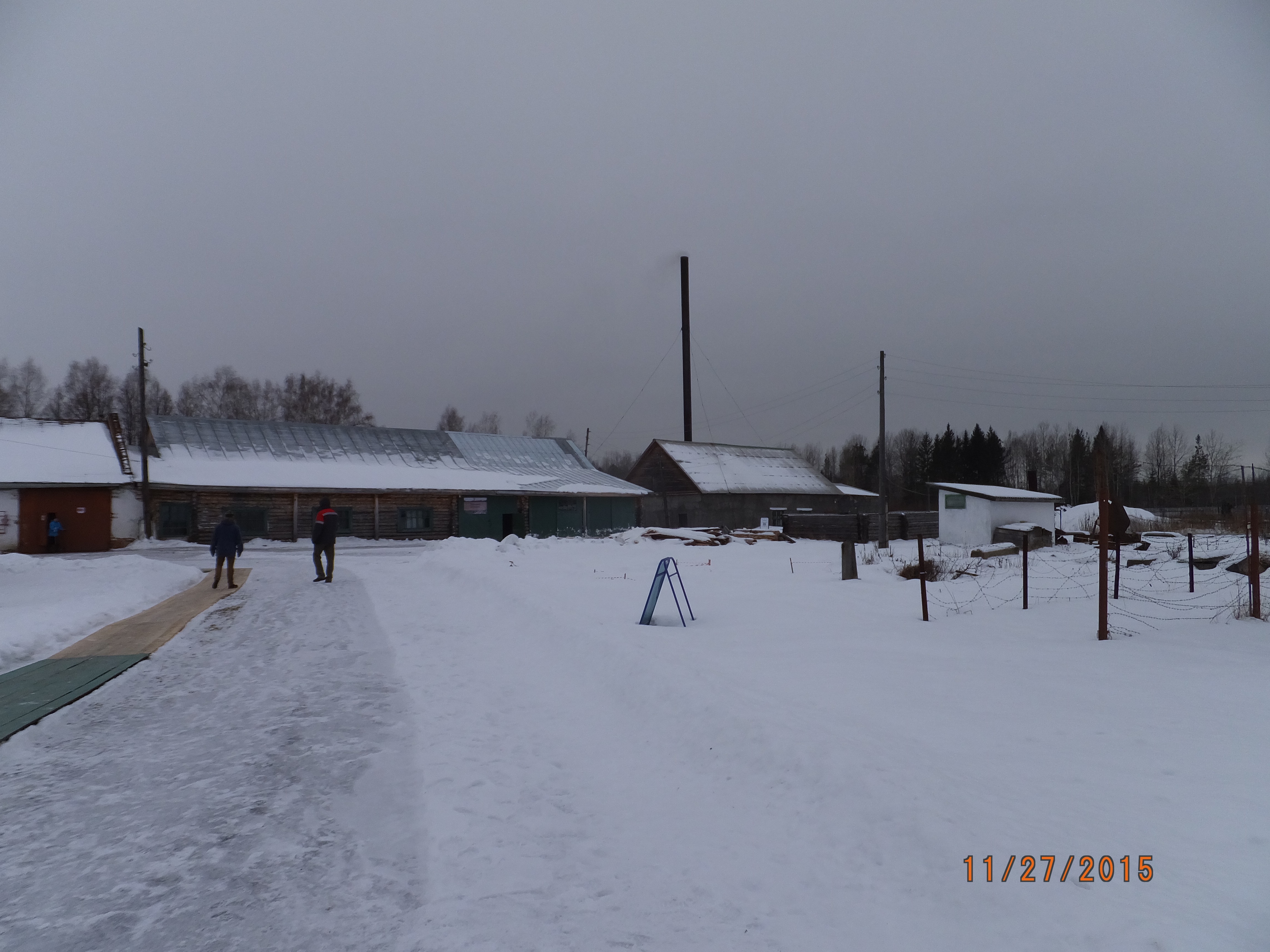 View of the inside of the enclosed labor portion of the camp
View of the inside of the enclosed labor portion of the camp
One of the products manufactured here by the forced labor were electric irons for clothing.
 Irons made by forced labor in these prison camps
Irons made by forced labor in these prison camps
Throughout the day, prisoners were subjected to searches to ensure they were not concealing tools or other items from the labor portion of the camp.
The housing unit originally included bunk beds of flat wood with no mattresses.
Later, more comfortable bedding furniture was added.
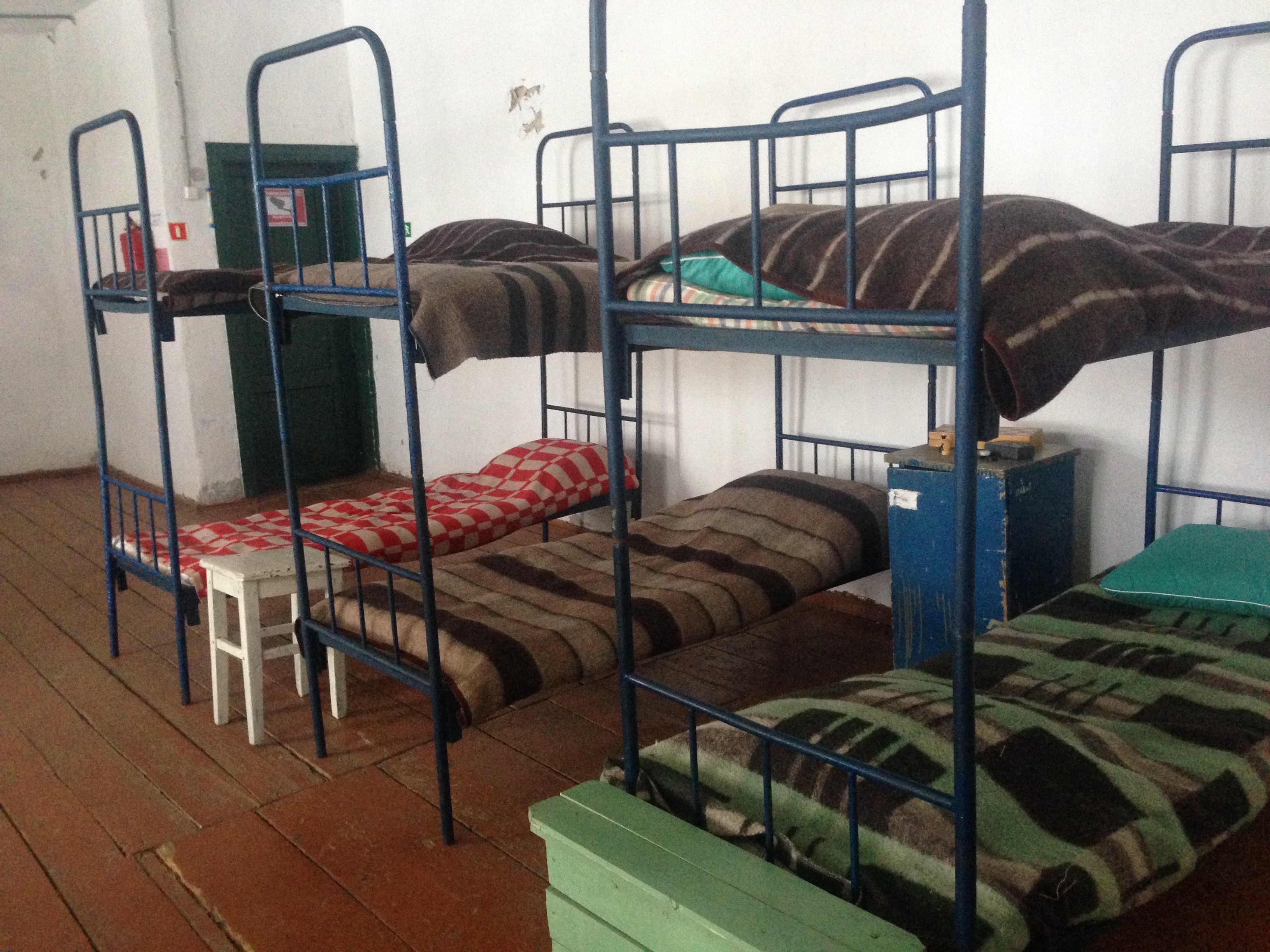 More comfortable bedding added later
More comfortable bedding added later
Ian Frazier perhaps best described this arrangement as an interior that “offered little to think about besides the limitless periods of suffering that had been crossed off here, and the unquiet rest these bunks had held.”
Additionally Frazier’s research found that “for covering they might have had a single blanket, or nothing besides the clothes they wore during the day.”
Food was also on the level of a Greek Tragedy, with the prisoners never being provided enough calories to cover the energy they expended.
Oddly, there was a cinema in the main hall, which Sergey said was used about once a month.
It turned out that Paul Theroux was mistaken calling this the worst gulag.
Alexander mentioned that tourists who had previously visited the remnants of gulags in the Far East were surprised at the comfort of Perm-36. Sergey added that these conditions were better than other gulags due to its one-time population of police officers and military personnel.
However, the punishment barracks was awful.
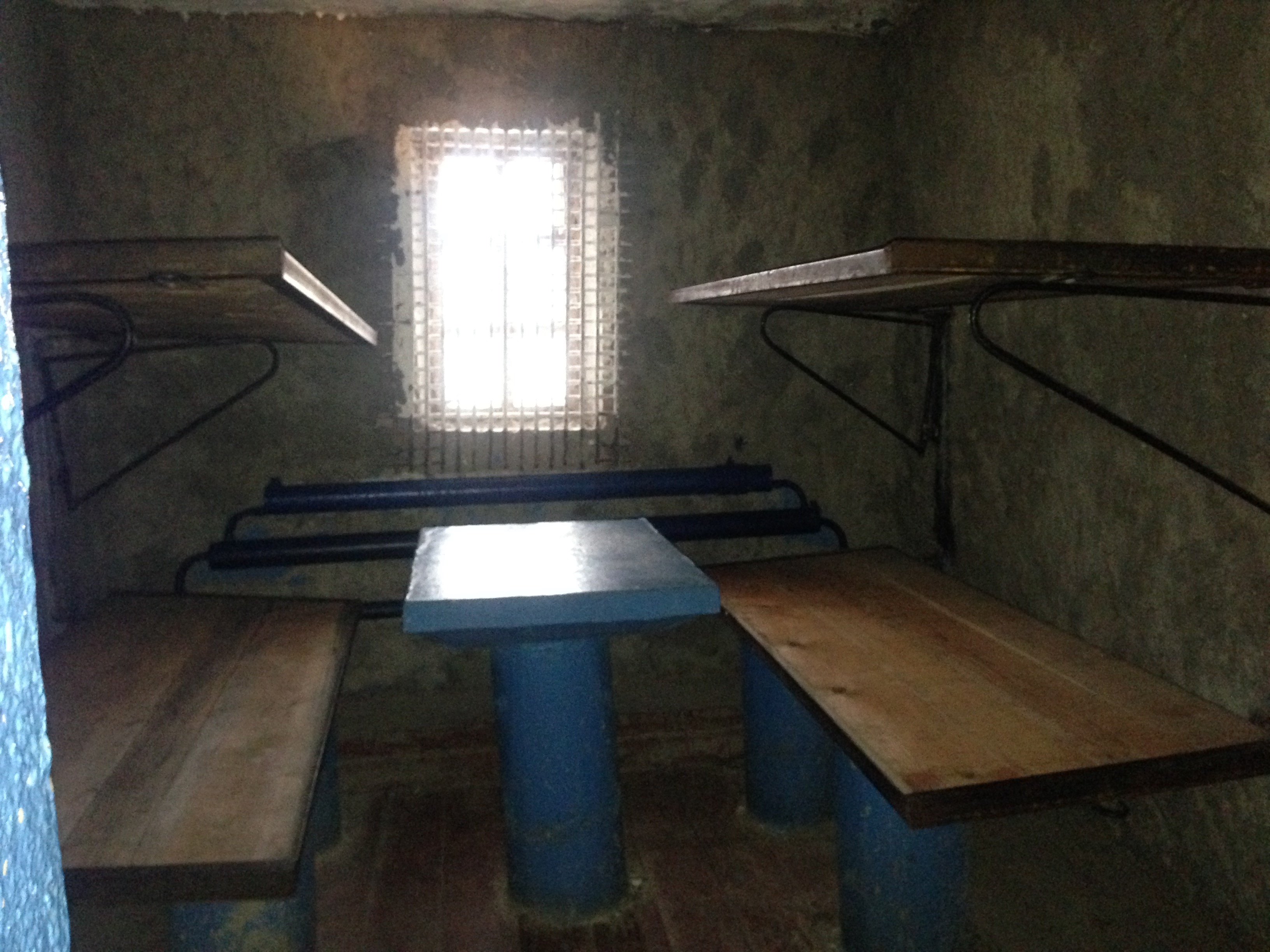 Beds in the punishment barracks
Beds in the punishment barracks
Food rations of bread and occasionally fish or potatoes would be more limited, showers would be less frequent, sleeping conditions were worsened, and inmates rarely went outside because the workshop was across the hallway from their punishment cell.
A prisoner here was only entitled to an occasional forty minutes outside, in a tiny, enclosed box. The view was of the sky interrupted by the harsh lines of barbed wire and the face of a guard towering above.
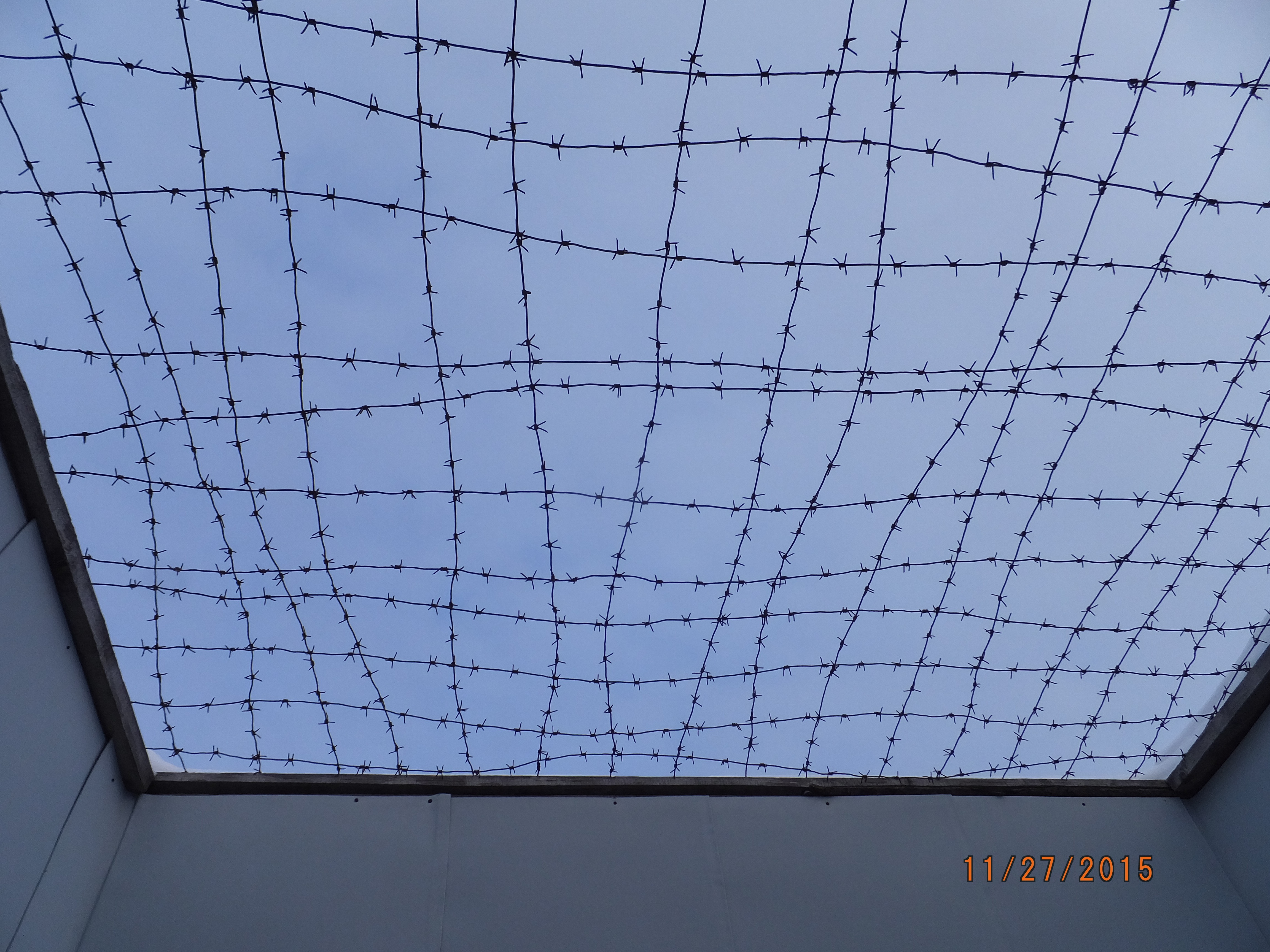 This was the view if lucky enough to go outside when imprisoned under the harshest conditions
This was the view if lucky enough to go outside when imprisoned under the harshest conditions
When guards came to check inmates’ cells, inmates were required to be facing backwards to the guard, bent over while reciting how awful their crimes were. This was to prevent the inmates from building a rapport with the guards.
It startled me to learn that areas were even added as recently as the 1980s. I had thought this system of gulags had become less common after the death of Stalin.
There were about 175 guards watching over approximately 250 prisoners, a proportion that seemed high. I cannot imagine the stench of prisoners given their infrequent access to showers. The plumbing was just a hole in the ground. This was all compounded by long, cold, dark winters.
The image that will forever be ingrained in my mind is of the multi-layer fence. Its formidability, being wide and densely filled with barriers, motion sensors, and fierce dogs, was a testament to the fact that people were doomed here.
Before departing, I asked Sergey why Perm-36 managed to be preserved as a museum. His theory was that many gulags were further east and removed from population centers. Perm City is only an overnight train ride from Moscow with an accessible and high quality road infrastructure toward Perm-36 to support tourists.
I commented on how Ian Frazier throughout his book described the awkwardness he experienced discussing gulags. I too felt the need to tone down my curiosity, as if my interest was somehow an insult to Russians.
He responded asking, “How many slave plantations are on display in America? Are you excited about visiting them?” His point was well taken.
As we said our goodbyes, Sergey made it a point to thank me as an American for the Lend-Lease act, which aided Russia in World War II. He quickly added, “Russia would have succeeded no matter what, however the United States aid helped speed up Russia’s success.”
It was interesting that despite his upbringing during the Cold War era, he could still say something positive about America.
During the drive back, Alexander took an interest in my travels and studies. He revealed that his boss’s tour company occasionally provided tour services to writers, such as myself. His boss was even instrumental in providing the guide services in a well-known American book: Ghost Train to the Eastern Star: On the Tracks of the Great Railway Bazaar by Paul Theroux. My jaw dropped. I found it serendipitous to be following Theroux’s tracks on my own travel trek.
As we parted, he left me with a gift of a pin depicting the American and Russian flags side by side.
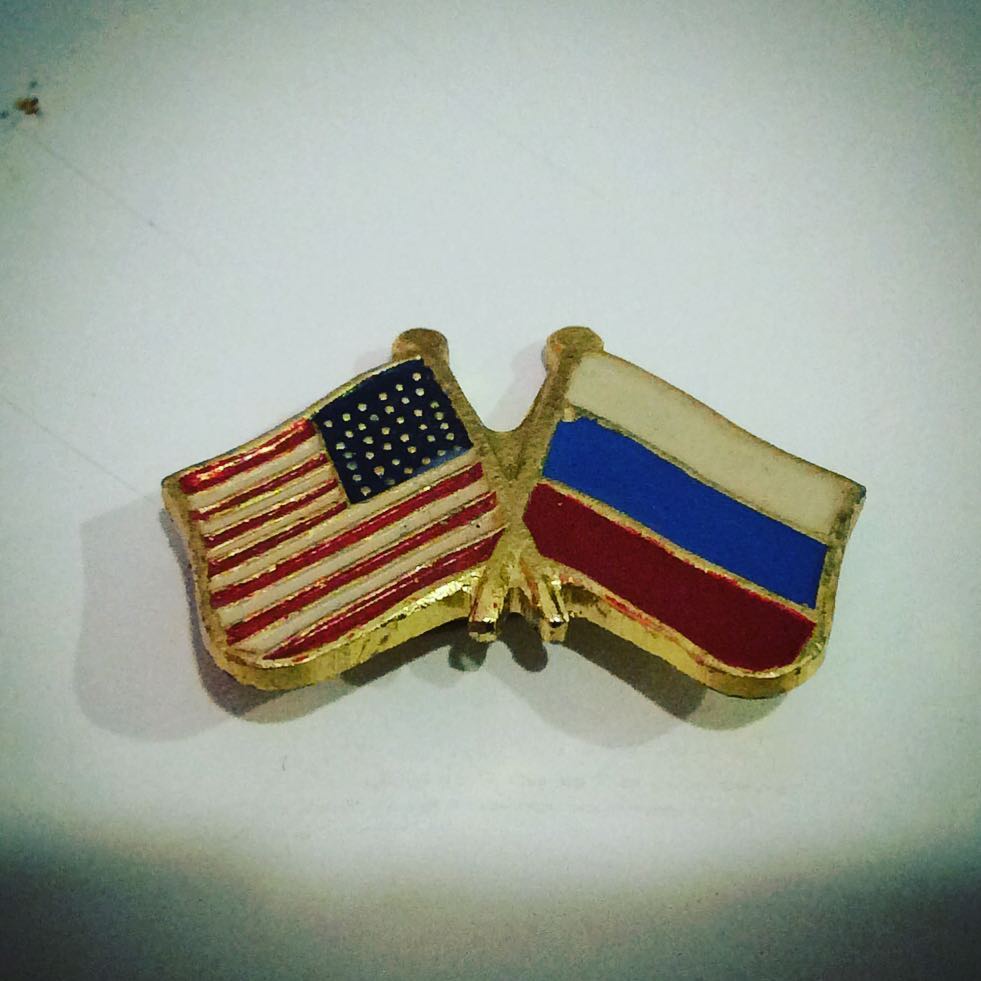 Pin given as gift by my guide Alexander
Pin given as gift by my guide Alexander
I want to give special thanks to Evrasia Travel Agency and my guide Alexander who helped make my trip to Perm 36 a success.
My entire visit to Perm was chosen based on visiting Perm 36. Given the location of Perm 36 in relation to the city of Perm, I am not confident I could have managed the visit to myself. Transportation was provided from and back to my hotel. Also, Alexander provided clear, easy to understand translations, giving my visit significantly more meaning and value. Alexander is very knowledgeable about the region in general and was a great person to spend the day with. I would use their services on future visits to this region.
// Oliver

